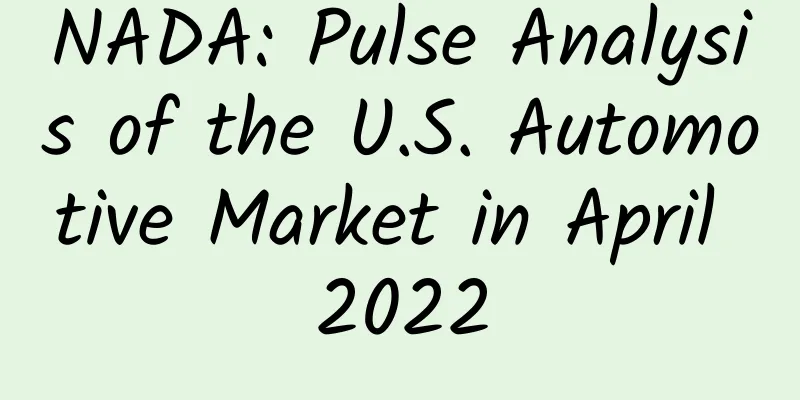This preservative commonly found in cakes and breads is actually a "deadly assassin"?

|
It has been almost half a month since the Mid-Autumn Festival, and the discussion about "sodium dehydroacetate" has not subsided. Many people on major platforms said that they did not eat a single mooncake this year because they heard that this additive can damage the liver and kidneys and cause cancer; some netizens even posted the ingredient list, claiming that all the bread they like contains sodium dehydroacetate, and they think they can no longer have "bread freedom"... During the Food Safety Publicity Week, let's talk about what the controversial sodium dehydroacetate is. 01 Does sodium dehydroacetate really cause cancer? Let me first state the conclusion: as long as it is added within the prescribed standards, there is no need to worry too much. Sodium dehydroacetate is a common preservative that has a good inhibitory effect on molds, yeasts, bacteria, etc., and compared with sorbic acid and its potassium salt, propionic acid and its sodium salt, etc., sodium dehydroacetate has stronger antibacterial ability against various molds and bacteria, and can be better integrated with food during production. Sodium dehydroacetate is easily soluble in water, has no special taste, and no special color, and does not affect the color, aroma and taste of food. In addition, its cost is relatively low, so sodium dehydroacetate is one of the most popular preservatives used by merchants. Therefore, in addition to my country, it has been widely used in the food industry in the United States, Canada, the European Union and other countries. Image source: provided by the author If we want to discuss why the "carcinogenic" storm has been set off recently, it can probably be traced back to the beginning of this year, when the Food Safety Standards and Monitoring and Evaluation Department issued the "National Food Safety Standard for the Use of Food Additives" (GB 2760-2024), which clearly stipulates that dehydroacetic acid and its sodium salt will no longer be allowed to be used in bread, pastries, baked food fillings and surface batter (including moon cakes) and other foods, and at the same time reduced its maximum use in pickled vegetables from the original 1 gram/kilogram to 0.3 grams/kilogram. This latest regulation will be officially implemented on February 8 next year. Coupled with the previous viral videos on the Internet such as "ants died in large numbers after eating moon cakes", many people have begun to regard additives as "a scourge". It should be made clear that the formulation of this new regulation does not mean that sodium dehydroacetate is unsafe. Although research evidence in recent years has shown that long-term intake of sodium dehydroacetate has a negative impact on the liver's detoxification function, some animal experiments have also shown that it may have certain toxic effects on the nervous system. The reality is that some manufacturers often add excessive amounts of sodium dehydroacetate to extend the shelf life due to their own environmental conditions. For example, in the "Notice of the State Administration for Market Regulation on the Unqualified Sampling of Mooncakes in 2023" issued last year, 6 batches of samples failed, one of the reasons being the excessive use of sodium dehydroacetate. It is not necessary for mooncakes and other pastries to achieve the purpose of long-term preservation by adding preservatives, so the revised standards can better guarantee public health. Copyright images in the gallery. Reprinting and using them may lead to copyright disputes. 02 Why do we need to add preservatives in food and pastry processing? Food preservatives are a large class of substances that can be divided into the following categories: (1) Chemical synthetic preservatives are preservatives obtained through chemical synthesis, including benzoic acid and its salts, potassium sorbate and its salts, dehydroacetic acid and its salts, parahydroxybenzoic acid esters, sodium diacetate, calcium propionate, etc. This type of preservative is widely used due to its low price. Based on its solubility, acidity and alkalinity and other characteristics, it is widely used in different food processing fields. (2) Biological food preservatives are antimicrobial substances produced through microbial fermentation. Currently, the preservatives allowed for use in China include nisin, natamycin, and lysozyme. The state has set limit standards for this type of preservatives. Due to their high prices, their use is restricted. (3) Natural preservatives are antibacterial substances contained in animal and plant ingredients. The ancients had already begun to discover their preservative effects, including spices and extracts such as garlic, ginger, pepper, and cloves, tea polyphenols, essential oils, propolis, chitosan, etc.; recently, some scholars have also studied the preservative effects of ginkgo leaf extracts, clove extracts, and pepper extracts. These substances are highly safe, but are less used due to restrictions such as high prices and limited preservative effects. We know that molds, bacteria and other microorganisms are everywhere in nature. The nutrients such as protein and carbohydrates and water in food create good conditions for the reproduction of microorganisms, and the large-scale reproduction of microorganisms can cause food to mold or spoil. Adding preservatives is a common method of food preservation, which can significantly extend the shelf life of food. Of course, in addition to preservatives, modern food production processes such as high-temperature sterilization and aseptic packaging can also greatly extend the shelf life of food. For example, foods such as bottled milk can have a shelf life of up to half a year without adding preservatives. Affected by technical conditions and costs, most categories of food processing cannot currently achieve aseptic packaging. In addition, preservatives approved for use will undergo a large number of scientific experiments, including acute toxicity tests, subacute toxicity tests and male toxicity tests, and will not cause harm to the human body when used in normal doses. Copyright images in the gallery. Reprinting and using them may lead to copyright disputes. 03 How to choose food with greater peace of mind? The original intention of using food additives is to improve food quality, enhance food color, flavor and taste, and meet the needs of preservation. Compliance with the use of food additives will not cause harm to human health. For example, the use of antioxidants can delay the oxidative decomposition of oils and reduce the production of oxides to protect human health. Thickeners such as pectin, gelatin, and alginate are natural substances that can improve food texture and taste, making food more delicious. Most of the public's misunderstandings about food additives come from the "technology and hard work" circulating on the Internet, such as dyed steamed buns and "odor enhancers" for snail noodles. In essence, they are caused by the illegal use of illegal additives or excessive abuse of food additives. Although preservatives themselves are not essential for our bodies, using less or no preservatives will reduce the shelf life of food and increase costs, so the health and safety of food should be considered comprehensively. After all, if you eat so-called zero-additive food that is spoiled, contaminated by microorganisms, the harm to your body may be far greater than a tiny amount of additives. Considering safety, health and other factors, when choosing food, it is recommended that you do not blindly pursue zero additives, but do not pay too much attention to the long shelf life. In addition, you must learn to read the ingredient list and choose foods produced by regular manufacturers with SC production license numbers, so that the product quality is relatively more guaranteed. Taking the bread that everyone loves to eat as an example, in the ingredient list, the coarse grain ingredients must be at the top. You can also look at the nutritional composition table to understand whether the food can meet nutritional needs through the percentage of various nutrients. It is recommended to choose a fat content of ≤10%, because a seemingly inconspicuous chocolate bread may have more fat than fried chicken! Expert: Wang Guoyi, Postdoctoral Fellow in Nutrition and Food Safety at China Agricultural University, Associate Professor at Beijing University of Technology, Chairman of the Elderly Food and Health Committee of Beijing Food Society Produced by: Science Popularization China The cover of this article is the copyrighted image of the gallery. Reprinting and using it may cause copyright disputes. |
Recommend
An anonymous source revealed how ASO Himalaya was created
An anonymous source revealed how ASO Himalaya was...
A terrifying night! More than 30 tornadoes hit the United States
On the evening of the 10th local time, six states...
Analysis of Mother’s Day Marketing Promotion Case Studies!
Gorky said: "All the glory and pride in the ...
How to make your Tik Tok VLOG become popular content?
Tik Tok is a short video software used by many yo...
In a mobile Internet company, what are the KPIs of each department?
KPI, or key performance indicator, is a performan...
Liu Liduo Story Template Beginner Camp: Millionaire playwright teaches you how to create stories, and you can write good stories that sell well by following the routine
Liu Liduo Story Template Beginner Camp: Millionai...
2021, the first year of traffic marketing collapse
2021 is about to end, and someone said, Yang Yang...
Former Meituan COO Gan Jiawei: Operations are Meituan’s core competitiveness | An article that explains the essence of operations (a must-read for operators)
Many times when we meet with colleagues, we will ...
Practical tips for beginners to learn Tik Tok feed flow, recommended to save!
The dramatic changes in the second-tier e-commerc...
New research finds: Eating more dark chocolate can reduce the risk of diabetes? The truth is...
Chocolate is delicious and loved by people, but a...
How can enterprises operate new media related to party building?
Nowadays, more and more companies have begun to o...
Let's watch together! The "Chinese Dove Flower" from the Ice Age
China is a vast country with rich resources and c...
Double 11 Douyin e-commerce live broadcast review practical manual
A few days ago, I posted a message on WeChat Mome...
KOL marketing skills!
KOL has undoubtedly transformed the entire market...
![[Daiyu Finance] Yan Fan Tactics Yan Style Tactics First Style Tutorial - Heaven and Earth are missing and holding a golden baby](/upload/images/67cc0a6904435.webp)








